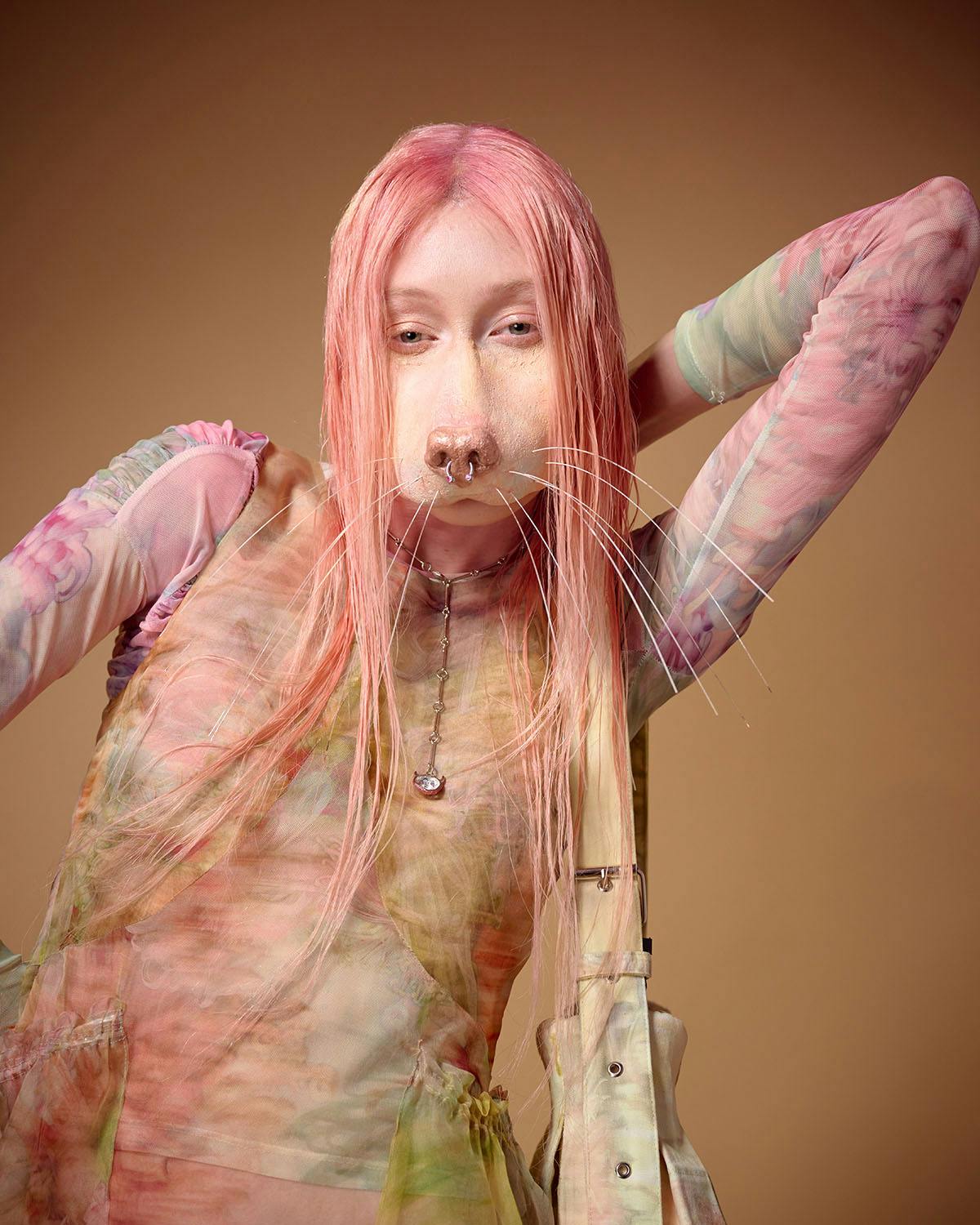"We're always wanting to push the limits," says Malina Stearns, the special effects makeup artist behind Doja Cat's head-turning prosthetics. "There's only so much you can do with a beauty look... As we need to become more extravagant and extreme to create something new or original, it makes sense for that to start to travel into the fashion world."
Stearns is one of a select handful of artists pushing special effects makeup into the mainstream. He is also the creator of the alien-like prosthetics Melanie Martinez wore on the cover of her most recent album, Portals (the singer also occasionally wears them on live).
Isamaya Ffrench, a makeup artist, transformed the models into rabbits, horses, and other farm animals in February for Collina Strada's Fall/Winter 2023 show. The same month, drag queen and makeup artist Alexis Stone attended Diesel's Milan Fashion Week show as Jennifer Coolidge, a piece of shape-shifting makeup artistry that included several expanses of synthetic flesh.
"Because I didn’t have any formal training in makeup, I started using unusual materials such as LEGO or metal or plastics to create makeup looks," Ffrench says of her beginnings in special effects experimentation. "The stories and concepts I was developing were going beyond cosmetics so it made sense for me to start using prosthetics. They had only been used in movies up until that point — I thought it would be interesting to introduce them into a beauty and fashion context."
Since then, Ffrench has used her special effects know-how on shoots for Burberry, Byredo, and her eponymous makeup line, ISAMAYA. Over time, she has noticed an uptick in both celebrities and brands approaching her to do special effects work.
The same goes for Stearns, whose avant-garde work once rendered her "a little bit of an outcast" in the makeup community. Now, she says, "people are more willing to fully transform and be a little bit unrecognizable."l
To Stearns, the increasing visibility of prosthetics on the runway and the red carpet isn't a surprise. "It's an evolution of things... It's the future," she says. Prosthetics are, in some instances, time-consuming and costly, but they're also becoming increasingly accessible to those outside of the film industry. Armed with YouTube tutorials and makeup materials available online, people are beginning to realize that they, too, can inhabit completely new characters, just like the actors they see on-screen.
Ffrench attributes the recent popularity of prosthetics to their novelty. "It still feels quite new and weird in beauty culture," she notes.
In the age of social media, anything that merits a double-take is internet gold. Despite their growing prevalence, prosthetics strike most as relatively foreign. Existing somewhere on the border of fringe and mainstream, they certainly fall under the umbrella of things that elicit a wait, what was that?! — catnip for even the most jaded of social media scrollers. The proof is in the pudding: Doja Cat's feline face and Collina Strada's cast of Animorph-ic models made the rounds on Instagram, TikTok, and Twitter, garnering both admiration and outrage.
No matter your take on prosthetics, it's impossible for onlookers to feel nothing when confronted with, say, a face that appears to be half-human, half-cat. That's what makes prosthetics such an exciting entry into the pop cultural lexicon: You either love them or hate them. Stearns, of course, falls into the former camp. "Once I started doing them, I didn't want to touch beauty ever again," she says. "I love the idea of fully transforming into something completely different... the ability to be something else and someone else."


Comments
Post a Comment